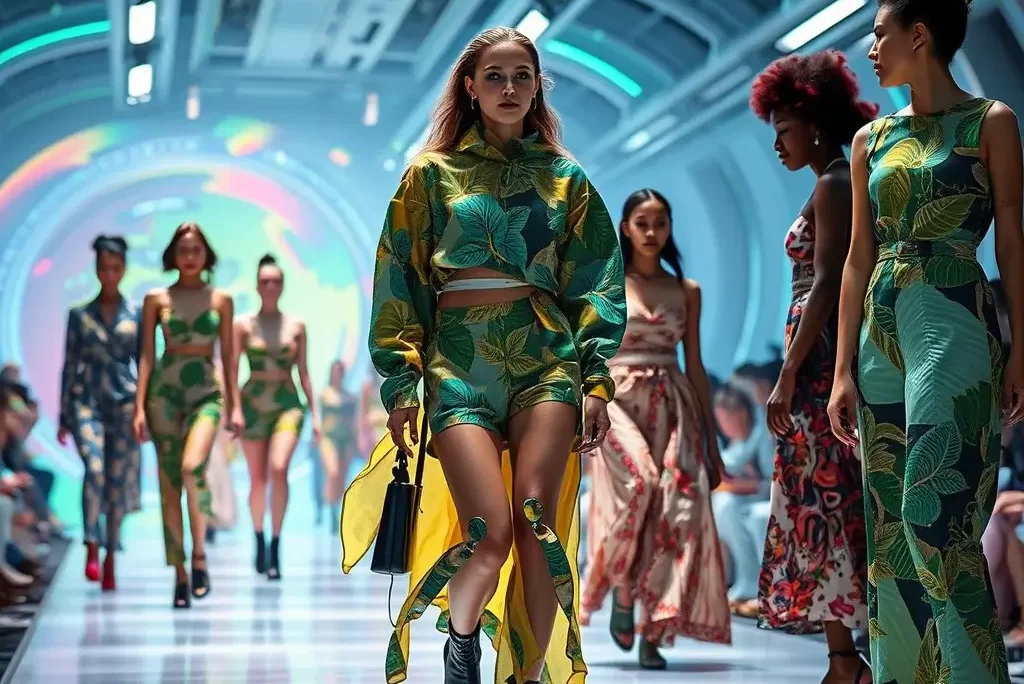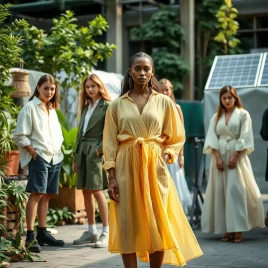The fashion industry is evolving, and sustainability is at the forefront of this transformation. As we step into 2025, eco-friendly trends are reshaping how we produce, consume, and recycle clothing. This article explores the latest developments in sustainable fashion and how they contribute to a greener future.
What is Sustainable Fashion?
Sustainable fashion refers to clothing designed, manufactured, and distributed in ways that minimize environmental impact. It incorporates ethical labor practices, eco-friendly materials, and innovative technologies that reduce waste and pollution.
Why Sustainable Fashion Matters
Fast fashion has significantly contributed to environmental degradation. Textile waste, pollution from dyes, and unethical labor practices are some of the major concerns. Sustainable fashion aims to address these issues by promoting ethical production, reducing carbon footprints, and encouraging mindful consumption.
Eco-Friendly Trends Shaping 2025
Biodegradable Fabrics
In 2025, biodegradable materials such as organic cotton, bamboo, and hemp are gaining popularity. These fabrics decompose naturally, reducing textile waste in landfills.
Plant-Based Alternatives
Innovative plant-based fabrics like mushroom leather (Mylo) and banana fiber are providing sustainable substitutes for traditional leather and synthetic textiles.
3D Printing in Fashion
3D printing is revolutionizing the fashion industry by minimizing waste and allowing designers to create intricate, sustainable garments with precision.
Recycled and Upcycled Clothing
Brands are embracing circular fashion by using recycled textiles and upcycling old clothes into new, stylish pieces.
Waterless Dyeing Techniques
New dyeing methods, such as CO2 dyeing and plant-based dyes, are reducing water usage and toxic chemical discharge.
The Rise of Ethical Brands
Supporting Fair Trade
More brands are ensuring fair wages and safe working conditions, empowering workers and fostering sustainable development.
Transparency in Supply Chains
Consumers are demanding greater transparency, pushing brands to disclose sourcing, manufacturing, and environmental impact.
Slow Fashion vs. Fast Fashion
Slow fashion encourages quality over quantity, promoting durable, timeless pieces instead of mass-produced disposable clothing.
Technology and AI in Sustainable Fashion
Artificial Intelligence is optimizing supply chains, predicting trends, and reducing waste through efficient resource management.
Second-Hand and Thrift Shopping Revolution
The resale market is booming, with platforms like Depop and ThredUp making second-hand shopping more accessible and fashionable.
Sustainable Packaging Solutions
Brands are switching to biodegradable, recyclable, and compostable packaging to reduce plastic waste.
The Role of Consumers in Green Fashion
Consumers play a vital role in sustainability by choosing ethical brands, recycling clothes, and supporting slow fashion movements.
Government Regulations and Policies
Governments worldwide are implementing stricter regulations on textile waste, pollution, and ethical labor practices to promote sustainability.
Brands Leading the Sustainable Fashion Movement
Top brands like Stella McCartney, Patagonia, and Eileen Fisher are setting industry standards for sustainability with eco-friendly practices.
Challenges and Limitations of Sustainable Fashion
Despite progress, challenges such as high production costs, lack of consumer awareness, and greenwashing still hinder widespread adoption.
The Future of Sustainable Fashion Beyond 2025
Looking ahead, innovations in biodegradable textiles, AI-driven production, and circular fashion models will further shape the industry.
Conclusion
Sustainable fashion is no longer a niche concept—it is the future of the industry. By embracing eco-friendly trends, ethical brands, and conscious consumerism, we can create a stylish yet sustainable world. The choices we make today will determine the fashion landscape of tomorrow.
FAQs
1. What is the main goal of sustainable fashion?
Sustainable fashion aims to reduce environmental impact, promote ethical labor practices, and encourage responsible consumption.
2. Are eco-friendly fabrics as durable as traditional materials?
Yes! Many sustainable fabrics, like hemp and organic cotton, are just as durable—if not more—than synthetic alternatives.
3. How can consumers contribute to sustainable fashion?
Consumers can support ethical brands, buy second-hand, recycle clothing, and choose quality over quantity.
4. What are some common greenwashing tactics?
Greenwashing includes misleading labels, vague sustainability claims, and lack of transparency in production processes.
5. Is sustainable fashion affordable?
While some eco-friendly brands have higher price points, second-hand shopping and durable clothing offer long-term savings.
Please don’t forget to leave a review.






